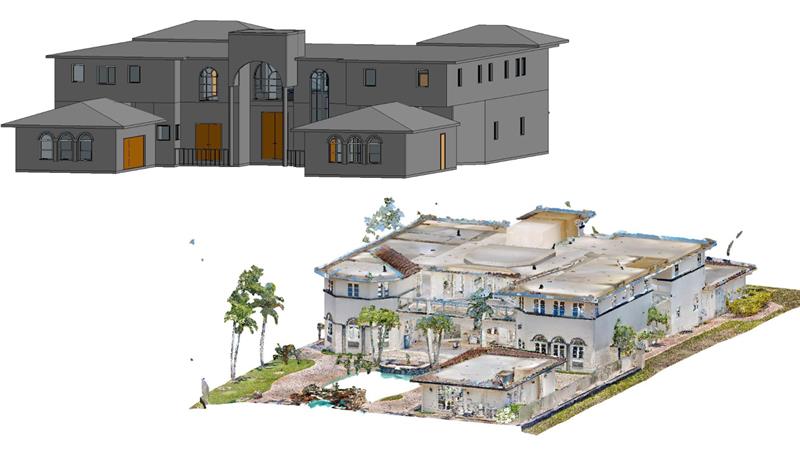What is a BIM execution plan?
As the architecture and construction industry rapidly moves toward integration of Building Information Modeling (BIM) in its workflows, the BIM execution plan (BEP) becomes increasingly crucial. True to its name, a BEP is a clear and systematic roadmap for planning and executing BIM throughout a project’s life cycle. It ensures all stakeholders are aligned with project goals, with effective and clear coordination. A BEP becomes one of the most integral parts of any BIM process for a new construction project.
BIM has been one of the most transformative innovations in today’s construction industry. It easily streamlines the entire process while giving all stakeholders a collaborative platform to easily plan, design and communicate on. Even though it has been adopted by the industry rapidly, a BIM execution plan is highly required to keep the whole process on track, minimize chances of error and achieve the project milestones with efficient coordination. Drafted by the construction or design team in the initial stages of the project, it follows the employer’s information requirements (EIR) – incorporating all project expectations of the BIM, project deliverables, information and workflow with much more.
The main objective of any BEP is to create the right framework for BIM integration and management. Typically, it contains all project information, BIM intended uses, standards, responsibilities, implementation schedule and much more. Moreover, it is not a static document – it needs to be updated regularly as the project evolves, eliminating any misunderstandings or mistakes that might have happened mid-project. It saves time and extra costs, gives clarity and ensures project delivery on time within budget. Above all, a well-executed BEP gives the process a clear structure and procedure of coordination for efficient communication, providing a transparent workflow for everyone involved.

Types of BIM Execution Plans
A BIM Execution Plan (BEP) typically has two types that depend on the scope of the project, client requirements and the stage at which the plan is being created.
- Pre-contract BEP: A Pre-contract BEP is drafted during the initial stages of the project, before the contract is even signed. Using this type of document a potential contractor or supplier showcases their approach to BIM implementation, integrating the requirements and scope of the project. It can include their capabilities, experiences, important project milestones and goals, along with all project information. The pre-contract BEP helps clients assess whether the proposing team understands and is equipped to meet the BIM-related demands of the project.
- Post-contract BEP: A Post-contract BEP is drafted much later as a fully developed plan, after the contract is awarded. This version of the BEP includes more specific tasks and detailed scheduling. Using the pre-contract BEP as a foundation, it finalises the project goals, tasks and responsibilities, standards, formats and processes. This document becomes central to the whole execution of the BIM.
Steps to Create a BIM Execution Plan
Even though a BIM execution plan for any project is unique, the process of developing it is highly structured and methodical.
- Understanding the Employer’s Information Requirements (EIR): It starts by understanding the client’s BIM-related requirements and expectations and clarifying all doubts.
- Defining Project goals: It must respond to the project’s goals; hence, all BIM-related objectives throughout the project cycle must be clearly defined.
- Establishing the Stakeholders: Listing all important stakeholders through the project’s lifecycle ensures seamless coordination and their roles.
- Collecting Project Information: All essential project information must be gathered – from project details, scope to budget allocations, expected timelines and information of every stakeholder.
- Exploring BIM usage: BIM is a vast software with endless possibilities, hence, its usage and implementation should be optimised and put to the best use possible according to the scope.
- Establishing the BIM standards: All BIM standards and procedures being followed for the project lifecycle must be stated clearly for all stakeholders to follow and remain aligned in the same workflow.
- Outlining Roles and Responsibilities: Everyone’s roles and respective responsibilities are defined to make sure the project expectations are understood and no confusion is created later.
- Setting Workflows and choosing softwares: Specifying the modeling workflows, coordination processes and compatible BIM software formats and platforms suitable for the project.
- Specifying Deliverables and Scheduling: All expected deliverables, their timelines and deadlines, along with project milestones, are scheduled and specified.
- Define Quality Control Measures: Standards must be set for an efficient and detailed quality control that verifies models, resolves any clashes and ensures quality deliverables at the end.
- Regular Review and Update: It must be treated as a living document that is updated regularly after reviewing the project conditions, team updates, or any other scope shifts.
Benefits of a BIM Execution Plan
Integration of a BEP with BIM implementation within a project has several benefits for both – the project and the stakeholders as well.
- Establishes clear communication and collaboration: It becomes a guide for everyone with their defined roles, responsibilities and expectations during the project’s lifecycle, fostering clearer communication and easy coordination.
- Saves time, money and resources: It significantly saves time and minimizes errors that might delay the project, safeguarding finance, time and other resources; it is the most efficient risk mitigation tool.
- Better Quality Control: It ensures a more effective quality control. Helps in model validation, early clash detection and modeling accuracy, ensuring the final BIM output meets all quality standards.
- Ensures project delivery on-time, within-budget: A well-executed BEP ensures the project remains on schedule, achieves all goals and deliverables – all within the set budget.
- Ensures Transparency: BEPs promote acute transparency in a construction process through creating a Common Data Environment (CDE), making the project data accessible for all involved.
Best Practices for an Effective BEP
Though BEPs are highly efficient and have numerous benefits, you can still employ a few best practices that can make the workflow easier and the implementation more hassle-free.
- Starting early in a project: Early planning ensures everyone is aligned with the project’s scope, deliverables and their scheduling. It helps in planning early and reducing risks.
- Actively engaging all Stakeholders: BEPs are a project-based document, not only client-based. All stakeholders’ feedback should be included to truly reflect the project needs.
- Following established standards: There are many industry standards that already exist, like ISO 19650 or PAS 1192, that can be followed to create a BEP that is easy to execute.
- Keeping it Simple: Avoid over-complicating it with technical jargon or over-ambitious expectations and timelines. A BEP’s execution depends on how easy it is to understand and follow.
- Updating regularly: A BEP should be reviewed and updated regularly as the project lifecycle goes on, incorporating and planning for any sudden change mid-construction.
Conclusion
A strategically developed BIM execution plan is much more than just a piece of documentation for reference. It plays an integral role in making any BIM process successful in a construction project. By bringing structure, clarity and understanding into the process, it makes coordination easier and hassle free for everyone. As BIM continues to transform today’s construction industry, the importance of a well-structured BEP cannot be underestimated. It helps implement the BIM process in any project more easily, keeping it more structured. Adopting BIM alone, without any plan and structure, cannot help anyone. A BEP ensures that the projects are delivered on time, within budget, and to the highest quality standards. Adopting it in the early phases of the project, while evolving it continuously with the project, makes sure your project is utilising the full potential of BIM. In this era, integrating a BEP with your BIM strategy is not optional – it’s essential.


